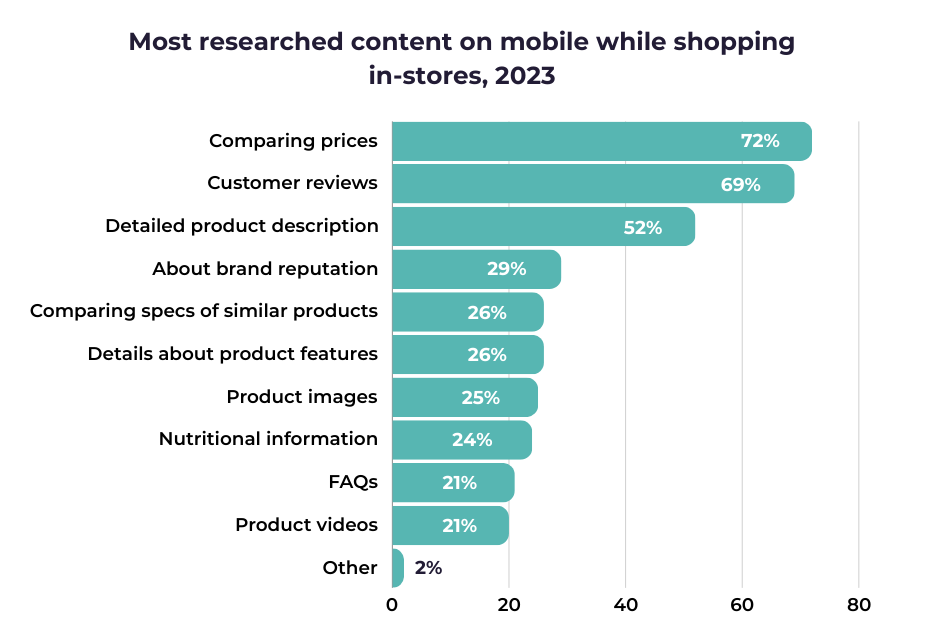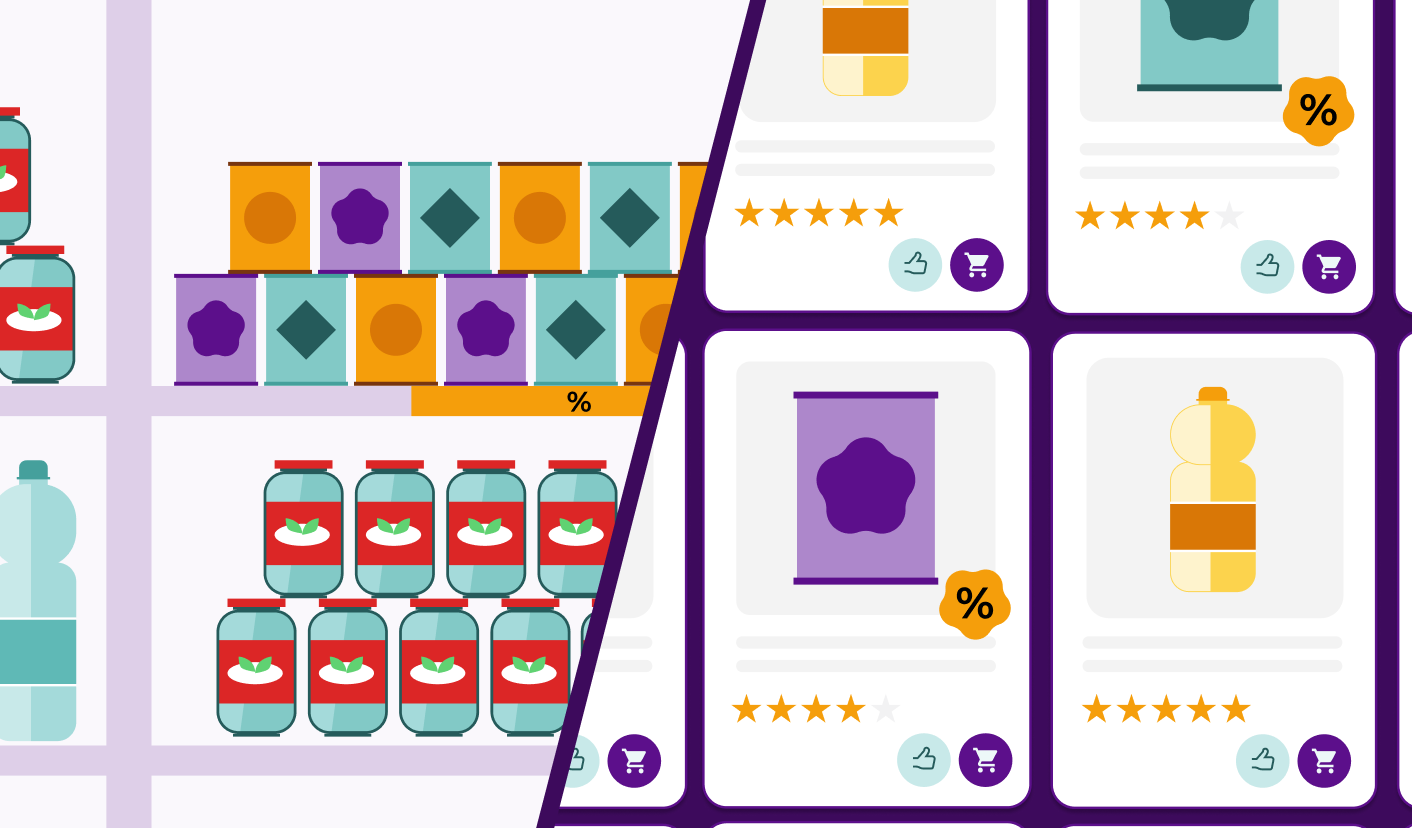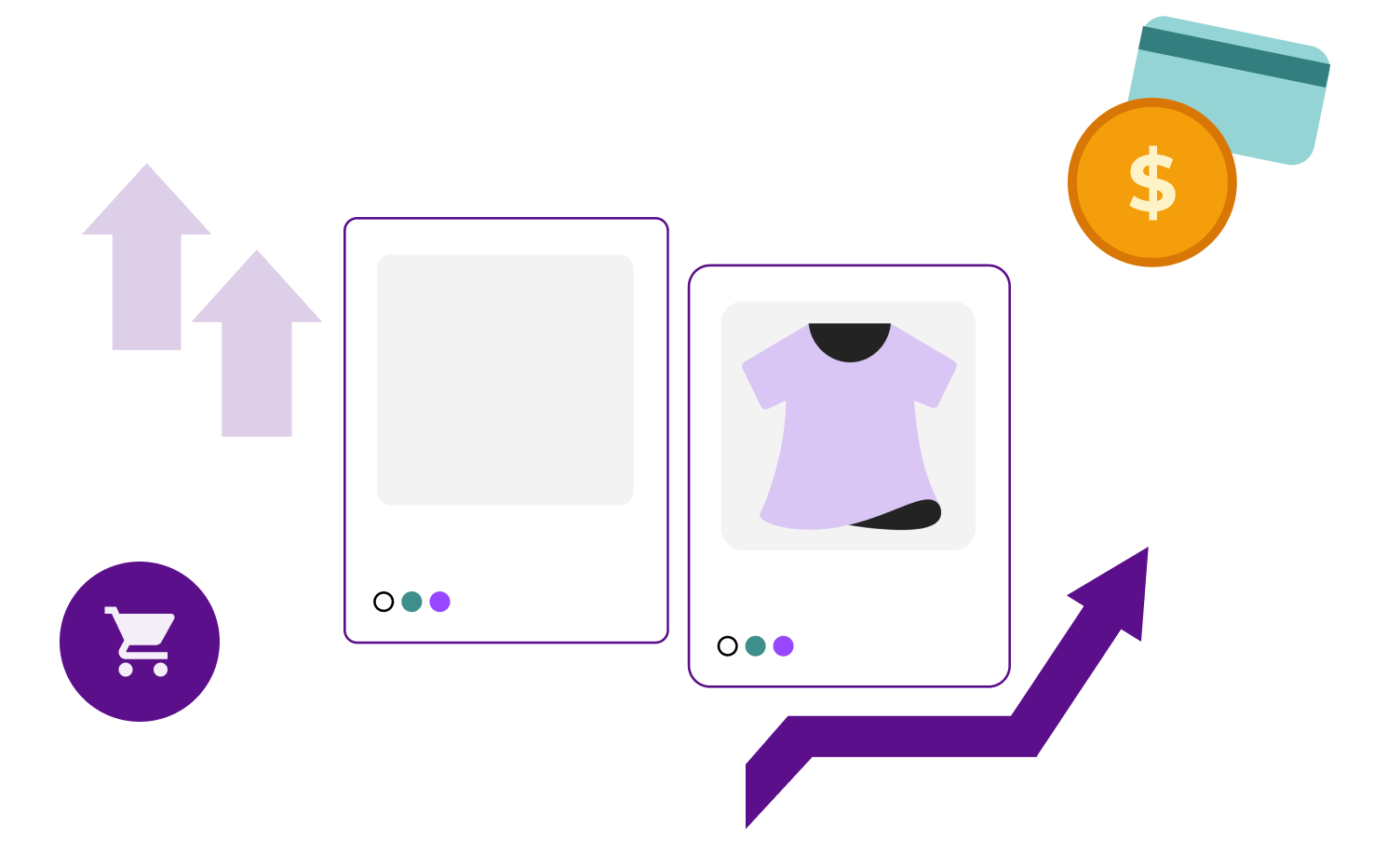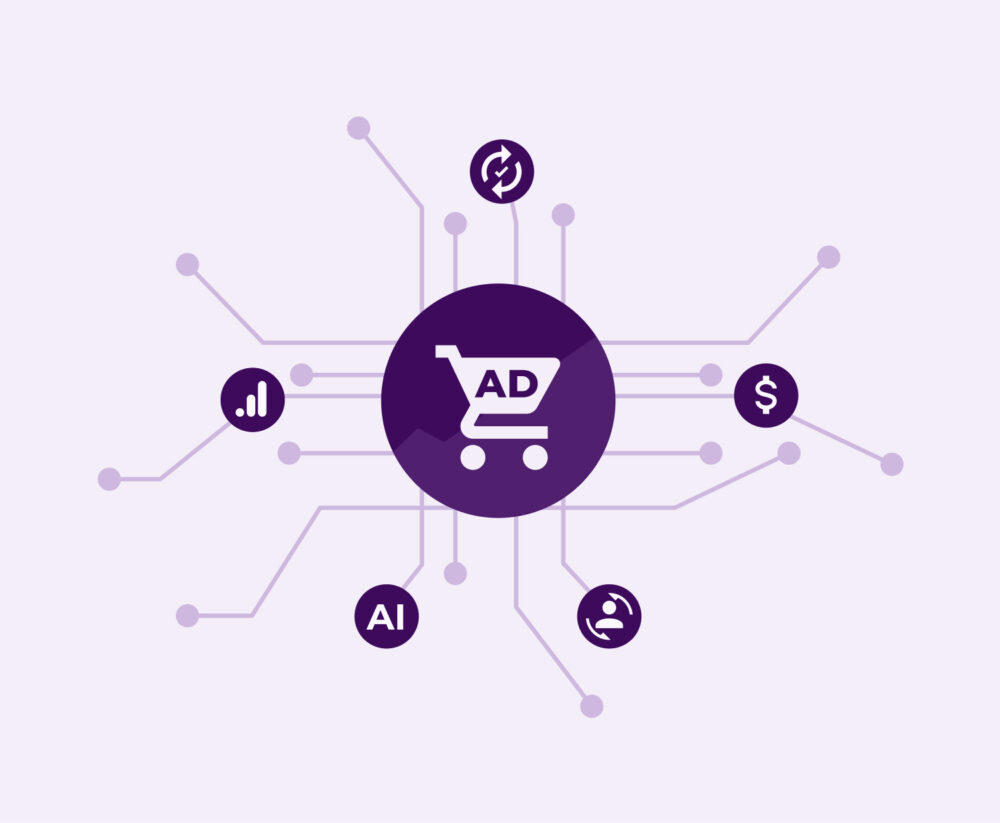The Digital Share of Shelf
In the digital age, where online presence is vital to the success of any brand, the concept of “Digital Share of Shelf” has become a crucial metric for businesses.
The report Consumer Product Content Benchmark published by 1WorldSync, based on a survey conducted in August 2023 of 1,500 shoppers in the US and Canada, shows that 72% of consumers compare prices online using their smartphone while shopping in-store. And over 50% look for product descriptions on the internet, even when they have the physical product in front of them:

Source: 1WorldSync, 2023
As we’ve discussed in previous posts, the Digital Shelf is the online equivalent of the physical shelf in a store. And Share of Shelf is one of the most important metrics we need to consider when monitoring our Digital Shelf.
What is Digital Share of Shelf?
Traditionally, the term Share of Shelf refers to the percentage of space a brand occupies on physical retailer shelves compared to its competitors. However, in the digital context, this term is adapted.
Digital Share of Shelf (SosD) measures the proportion of space or visibility that a brand has in online stores, e-commerce platforms and other digital channels. This indicator encompasses several aspects, including the frequency with which a brand appears in product searches, its position on results pages, the quality and quantity of product reviews, and its presence in promotions and automatic recommendations. In short, SosD is a quantitative representation of how well positioned a brand is in the digital environment against its competitors.
Physical Share of Shelf vs. Digital Share of Shelf
Although Physical Share of Shelf and Digital Share of Shelf share the same fundamental premise of brand visibility and presence, there are significant differences in their implementation and effects.
Physical Share of Shelf focuses on the amount of space a brand occupies on physical store shelves, directly influencing consumer perception and ease of product access at the point of sale. In contrast, Digital Share of Shelf refers to the brand’s visibility on e-commerce platforms, encompassing factors such as search result positioning, product reviews, and the effectiveness of digital marketing strategies.
While in the physical environment the limitations of space and inventory management are crucial, in the digital realm, content optimisation, SEO and customer interaction play a key role. Both approaches require different but complementary strategies to maximise brand presence and ultimately drive sales.

Why should brands measure SosD?
For brands, measuring Digital Share of Shelf is essential for several key reasons:
Because of the parallelism it represents with the physical world
The first reason, and one of the most important, is to understand that there is a very important parallelism between the digital world and the physical world. For example, in a huge sector like FMCG (Fast Moving Consuming Goods), although online transactions account for only 2% to 5% of sales, the correspondence of assortments, promotions and prices reaches 95% between the two worlds.
Therefore, we must be aware that the data provided by the tools that analyse Digital Share of Shelf are able to go beyond, and give us reliable information about the physical shelf as well. This can be very useful when optimising our strategies, as we will have real-time updated information (something almost impossible to achieve by measuring Physical Share of Shelf).
To optimise your marketing strategies in real time
Knowing their Digital Share of Shelf helps brands identify areas where they are losing ground to their competitors. For example, if a brand observes that its SosD is low in certain product categories or on certain platforms, it can immediately adjust its marketing and advertising strategies to improve its presence. This may include optimising product descriptions, investing in paid advertising, or encouraging improved product reviews.
Due to the increase in competition in the digital space
E-commerce has grown exponentially in recent years, especially driven by the COVID-19 pandemic which accelerated the transition to online shopping. This growth has intensified competition among brands to capture the attention of consumers. Measuring SosD allows brands to understand their relative position in the digital market and take strategic action to improve their visibility.
To improve the customer experience
A good SosD not only results in greater visibility, but also in a better customer experience. When a brand’s products are well positioned and easy to find, customers have a smoother and more satisfying shopping experience. This can increase customer loyalty and encourage repeat purchases.
To obtain valuable data about the competition
Share of Shelf provides valuable data on the performance of competitors. Brands can use this data to identify the successful strategies of their rivals and adapt their own tactics accordingly. This competitive analysis is essential to stay ahead of the curve.
Because it has a direct impact on sales
Greater visibility on digital platforms usually translates into increased sales. Consumers tend to buy products that are easier to find and have better reviews. Therefore, a high SosD can be directly correlated with an increase in sales and ultimately in the company’s revenue.
How to use this metric to your advantage with several winning strategies
Once a brand understands the importance of Digital Share of Shelf, it will be crucial to know how to use this metric to its advantage. Here are some strategies that brands can implement to win in SosD:
1. Ensure consistent brand representation
Today, it’s critical to reinforce brand recognition and foster customer loyalty. This will help you ensure and maintain the consistency of your brand across all digital platforms. By maintaining a unified brand image, using consistent messaging and visual elements, and working on your brand voice, you can establish a robust and easily recognisable presence in the digital landscape.
All this not only helps to foster trust and credibility, but also encourages customers to remember your brand, which strengthens your unique value proposition and allows you to achieve a better SosD share.
2. Optimise product content and create a good SEO strategy
Product page content is essential for improving Digital Share of Shelf. This includes product titles, descriptions, images and videos. Brands must ensure that their product descriptions are clear, concise and optimised for search engines. This includes using keywords in product titles and descriptions, as well as in tags and categories, in a way that favours search algorithms.
3. Optimise for mobile
As a way of taking care of the user experience, which is very important on digital platforms, it will also be necessary to provide a friction-less shopping experience for consumers who use their mobiles or tablets to browse.
Attention to detail, improving the interface and functionality of platforms creates an easy-to-use environment that encourages this type of buyer to explore and makes it easier for them to complete the purchase.
4. Use high-quality audiovisual elements
High-quality images and videos can significantly improve product visibility and appeal, and as a result drive purchasing decisions.
By offering detailed images and interactive content, brands can create an engaging environment that captures buyers and increases their confidence in the products that the brand offers and they are considering buying.
5. Manage your reviews better
Product reviews and ratings have a big impact on SosD. Brands should encourage their customers to leave positive reviews and respond to negative criticism constructively. They can also implement strategies to increase the number of reviews, such as offering incentives to customers who leave feedback.
6. Develop a good pricing and promotion strategy
To stay competitive and optimise the space we occupy on the digital shelf, it’s very important to invest in creating a good pricing and promotion strategy. We’ll also need to closely monitor our competitors’ price trends. By closely monitoring their strategies, you can make informed decisions and adjust your prices accordingly to market movements.
A Digital Shelf Analytics tool will help you control and optimise your position and visibility, impacting all sales channels. You can also do the same with your competitors.
7. Collaborate closely with retailers and invest in Retail Media
Brands must work closely with retailers to ensure their products are well positioned. This may include negotiating prime placements on product pages, as well as participating in exclusive promotions and special events on specific dates.
Investing in paid advertising and Retail Media can increase product visibility on e-commerce platforms. Targeted advertising campaigns can place products in the top search positions, increasing Digital Share of Shelf and attracting more potential customers.
Conclusion
Digital Share of Shelf is a crucial metric in today’s e-commerce world. For brands, measuring and optimising SosD can mean the difference between success and failure in an increasingly dynamic and competitive environment. Therefore, it is essential that brands continually monitor their SosD and conduct periodic analysis to identify trends and opportunities for improvement.
Using a tool that analyses the Digital Shelf and tracks your Retail Media campaigns will provide you with valuable data to make informed decisions and adjust strategies as needed. Digital shelf analysis is the new way to study markets. With a tool that encompasses this analysis, all your teams will be armed in real time with the insights needed to grow the business.
Ultimately, a strategic approach to the Digital Share of Shelf will not only improve your brand’s online presence, but also strengthen its market position and foster sustainable long-term growth.




